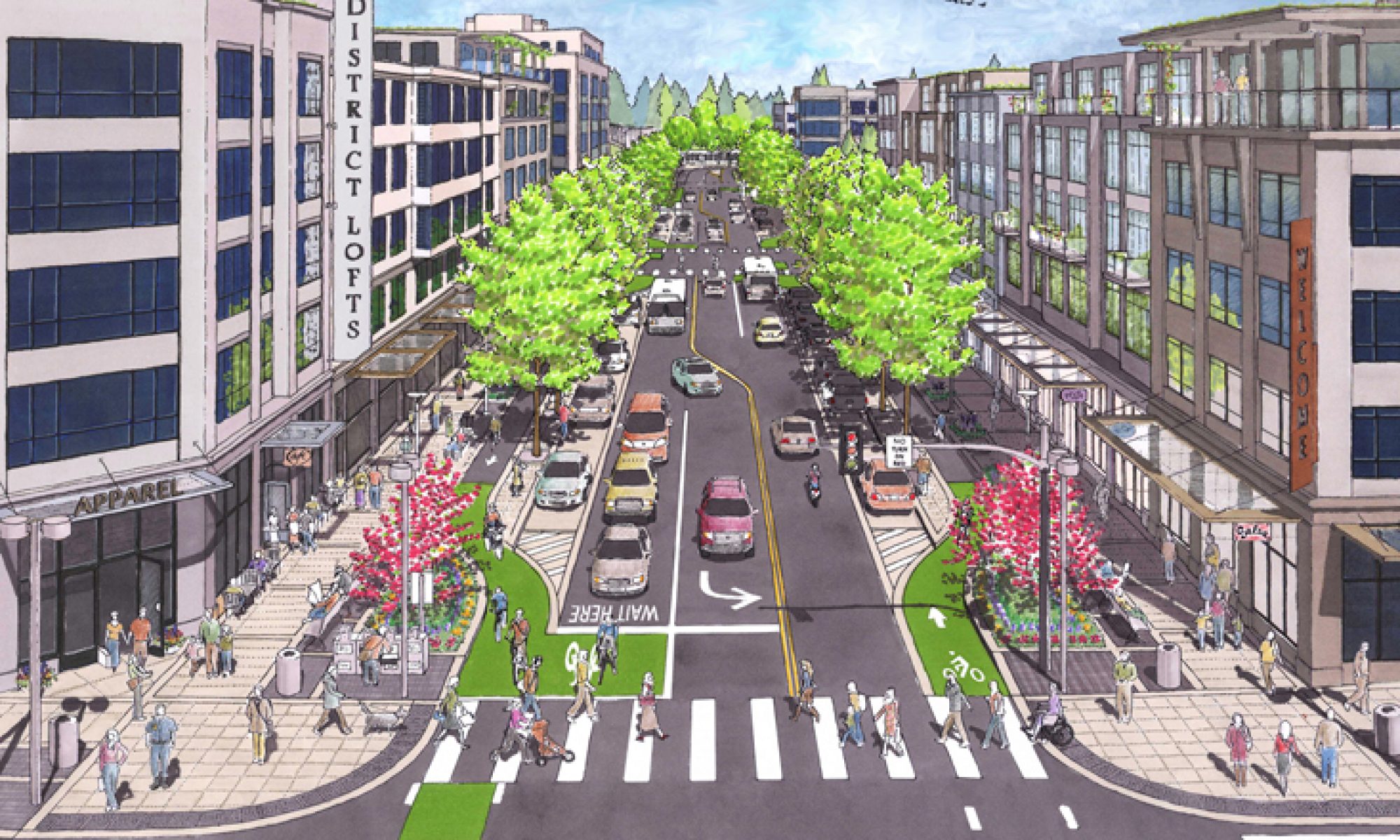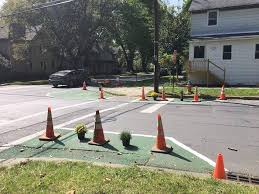Let’s talk and get to work.
Whether you care about safety, efficiency, congestion, communities, taxes, business, tourism, or economy… this.



Transportation Equity in Our City
Let’s talk and get to work.
Whether you care about safety, efficiency, congestion, communities, taxes, business, tourism, or economy… this.

Cities are finding cost-effective ways to calm traffic. Not surprising that motorists are not happy, but people are safer.

“This particular configuration, where the bollards are placed in the roadbed to make car turns tighter and shorten crossing distances, is relatively new for St. Louis. Some people may not like the way they look, but the globes are a cost-effective solution to dangerously designed streets.”
Read more…https://usa.streetsblog.org/2018/01/04/st-louis-calms-traffic-with-heavy-concrete-globes/
Riding a bike may be easier than walking for two-thirds of disabled cyclists, but they often remain invisible to society.
In the context of an ageing global population, mobility experts are increasingly seeing cycling as a way to help people with disabilities move around cities independently. A bike can act as a “rolling walking stick”; yet looking at its owner you wouldn’t know they had a disability: around 40% of disabled cyclists simply use a regular two-wheeled bike.
For two out of three disabled cyclists, riding a bike is easier than walking, easing joint strain, aiding balance and relieving breathing difficulties. According to recent research by Transport for London, 78% of disabled people are able to cycle, while 15% sometimes use a bike to get around.
Read more…
A new law could see the city’s cycling infrastructure completely transformed.
Last year, 33 Berliners died in collisions with motor vehicles; nine were cyclists. While a few decades ago, many Berlin streets seemed eerily traffic-free for such a major city, now its roads are clogged and bike lanes created simply by painting a roadside verge offer little protection. This is deterring people from getting on their bikes, fearing with some justification that the road plan itself is not tailored primarily to their safety.
To remedy this, the city has committed not just to creating an alternative cycle network in the form of separate segregated superhighways, which could cross the city using former rail corridors. It would also see the remodeling of dangerous junctions to protect cyclists still using the regular road system, with 10 remodeled in the first year, 20 the following, and 30 each year thereafter until intersections across the city are deemed safe. Meanwhile, the law plans to give non-private vehicles preference, by retooling traffic lights so that buses and streetcars get priority.
Read more…
This is a research study and the findings are reported in the article. There are some predictable responses from readers. After reading the article be sure to read the comments, including the one from Polli Heh Schildge on behalf of APCSC.
A study [PDF] commissioned by the Florida Department of Transportation provides new insight into how cyclists and drivers interact, and found that motorists and dangerous street design — not cyclist behavior — are the primary factors that put cyclists at risk.
Researchers from the University of South Florida gathered data from 100 bike riders in and around Tampa. Participants’ bikes were mounted with sensors, cameras, and GPS to record their movements for a total of 2,000 hours.
The results do not support the assumption that cyclists are reckless rule-breakers.
From Asbury Park Complete Streets Coalition: Stay safe out on the roads whatever your mode of transportation!

Read more…
In theory, creating a safer street should be easy: Make life harder for cars and easier for people. That means lowering the speed limit, building speed bumps, traffic circles, and bulb-outs, which narrow roads and force drivers to be more cautious, and creating special, separated spaces in the street for drivers, cyclists, and walkers.
Firefighters, though—they just want to get where they’re going, fast. And in cities like Baltimore or New York, fire departments have pushed back against design tweaks that better protect bicyclists and walkers, arguing that the changes make it harder to maneuver their fire engines, and thus, protect residents. In Baltimore, the conflict even led to litigation.
In San Francisco, though: compromise.
The smaller, smarter Vision Zero truck will make it easier for firefighters to navigate roads clogged with bike lanes, double parkers, and Uber drop-offs
Read more…
https://www.wired.com/story/sanfrancisco-smaller-firetrucks/
Cities all over the world are using smaller emergency vehicles to get through city traffic. Smaller vehicles have medical supplies, oxygen, defibrillators, and EMTs can get to locations faster and tend to victims in situations that do not need full-sized fire trucks and ambulances.
Read more…
https://www.nytimes.com/2017/12/31/nyregion/fire-department-medical-emergencies-times-square-nyc.html

For years, many cities have pushed their residents to adopt car-free lifestyles. Doing so can help limit further traffic congestion and pollution, while also saving people money and improving their physical fitness.
By and large, though, the vast majority of Americans aren’t ready to ditch their vehicles. According to the latest Census Bureau estimates, only 8.7 percent of U.S. households reported not having any vehicles available last year. That’s actually down slightly from a year ago and is at about the same level as before the Great Recession.
A stronger economy explains, in part, the small decline in car-free households. Demographics, fuel prices and where people live — more Americans are migrating from cities to less dense suburbs — also play a role in whether a household goes car-free.
Read more…

If you’re a public space aficionado or transportation maven, one only needs to sign on to one of the various social media feeds to see the daily movement that is sweeping across the world: groups of people are literally taking back their streets by implementing low-cost, temporary solutions to what they see as simple ways of making their streets safer or more livable.
So sit back and watch as we visit just a small fraction of the community making this happen!
Watch and read more…